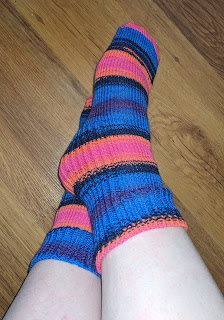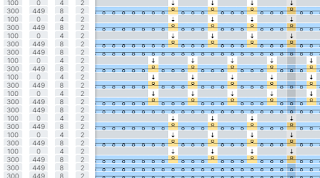Sock Thoughts

I really want more knit socks. There are skeins of sock yarn hidden in drawers, waiting for their turn. Machine Knitting has mostly ‘solved’ socks. There's a lot of great tutorials you can follow for most kinds of knitting machines. If you have a single bed machine, you knit the front of the sock, then seam-as-you-go when you knit the back, inserting a short row heel based on your shoe size. If you have a v-bed, you knit in the round until the heel, then disengage the front of the machine and knit your heel. When that’s done, you can raise the bed back into working position and continue to knit circularly. If you have a CSM, you take half the stitches out of work and work in a short row heel then resume knitting circularly. All these techniques involve hanging weights. You can’t hang weights on the Kniterate, it has rollers like an industrial machine. It can short row, but you can’t disengage the front bed, the knitting will still be pulled down by the rollers. I’ve knit a ‘f
